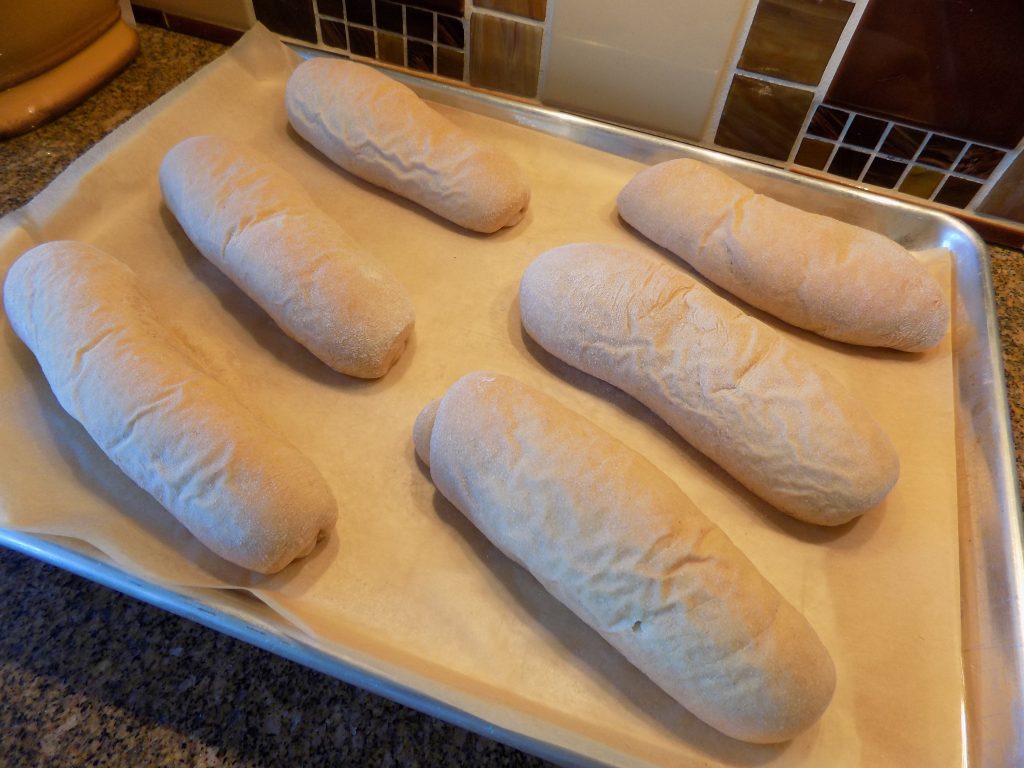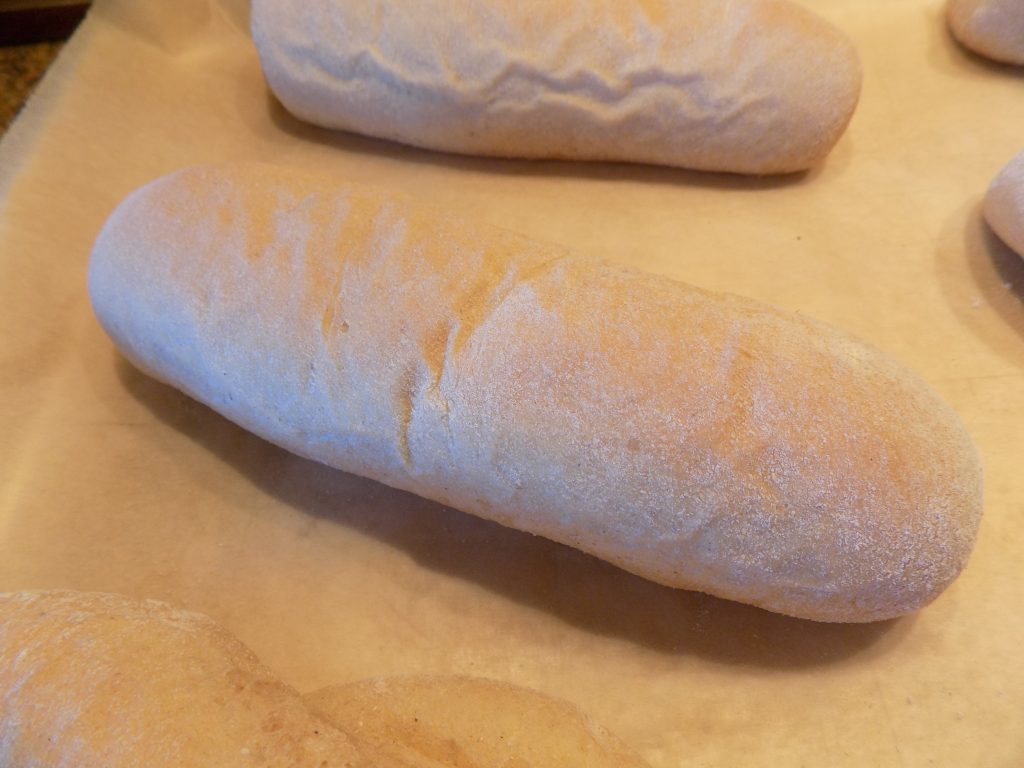

So, I know I have mentioned before that I am not a gourmet. I am just a gal who likes really great food. And I am not a food snob. I mean really, my favorite food is a bacon guacamole burger. So, that said, I definitely do not qualify for gourmet status! And for more proof positive, in addition to a truly great burger, I periodically get a yearning for a really good hotdog. Again, hardly a gourmet food. Except, and I mean this, when the hotdog is made by a specialty butcher shop. Then – all bets are off. But what I never have been able to find until yesterday, was a hotdog bun worthy of the quality hotdogs that are now available at most grocery stores. And yes, I am picky when it comes to both hamburger and hotdog buns. The buns should be tasty as well as able to contain all the meat and fillings while the juices run down my arms and off my elbows. (A condition I find usually happens when I am enjoying a really good burger or hotdog.)
So, in keeping with my new reality (whole wheat flour and reduced sugar) I modified a recipe that I found on the godairyfree.org. site.
And I have to say, this was one of the easiest bread products I have ever made. And the resulting hotdog buns were good enough to have eaten sans the hotdog. Of course, I didn’t, but the bun was just that delicious. And tender, and just the right size to keep my hotdog and extras (mayonnaise, dill pickle relish, ketchup, and old-fashioned yellow mustard) from escaping. This quick and easy to prepare bun simply made for one absolutely delicious hotdog experience.
So, if you too love a great hotdog then this is the bun for you. And sorry there is no picture of the dough made into hamburger buns. But after tasting the dough rolled into hotdog buns, I’m sure it won’t be long before I make hamburger buns. When that happens, I will edit this post and add a picture.
Until then, just trust me and make your own hamburger buns using this recipe. You will not be disappointed.
As always, have fun in your kitchen. There are so many fabulous recipes available on the internet. I can’t imagine ever going back to just having cookbooks. In fact, I haven’t looked at even one of the many cookbooks I own for such a long time it’s almost embarrassing. Because I own some really great cookbooks. Of course, some of them like my Betty Crocker cookbook are being held together with silver tape and stains from cooking incidents. But others are still in pristine condition. But I still keep them around because it’s like having good friends. You may not see them very often, but it’s reassuring to just know that they exist.
So, to all my good friends, I may have been a bit reclusive lately, but never wonder if you are still a part of my life. You absolutely are and always will be dear to my heart. I’m just getting older and slowing down a bit. Think of me like you would one of my cookbooks. On the shelf but always available when needed.
Peace and love to all.
1 c. lukewarm water
2 tsp. granulated sugar
2¼ tsp. or one pkg. instant yeast
1 tsp. fine sea salt
2 T. extra virgin olive oil, plus extra to grease the bowl
½ c. oat flour
2 T. vital wheat gluten*
2 c. whole wheat pastry flour or white whole wheat flour**
In the bowl of your stand mixer, combine the water, sugar, and yeast. Let sit and proof for about 5 minutes or until you start to see bubbles.
Add the salt, olive oil, oat flour, vital wheat gluten, and most of the whole wheat pastry flour to the yeast mixture.
Using your bread hook, knead the dough until it is soft, smooth, and elastic using as much additional flour as required.
Pour a bit of olive oil in the bowl, and using your hands and a plastic spatula, roll the dough into a lightly greased ball. Cover the bowl with a tea towel and let rise in a warm place until doubled, about 1 hour.
Lightly oil a baking sheet or line it with parchment paper.
Transfer the risen dough to a lightly floured surface and punch it down.
Cut the dough into 6 equal portions.
For hotdog buns:
On a lightly floured surface, roll out each portion into a flattened piece of dough about 5-inches long and 4-inches wide. Then tightly roll up the dough to form a cylinder. Tuck in the sides/edges and place each portion on the prepared baking sheet about 2-inches apart. Cover with a light tea towel and let rise until nearly doubled, about ½ hour.
Bake in a pre-heated 375-degree oven for 10-12 minutes or until the buns sound hollow when tapped on the bottom or until they reach 190-degrees when temperature taken with an instant-read thermometer. Do not overbake the rolls.
Remove from oven and transfer to a wire rack to cool completely before slicing.
For hamburger buns:
Shape each portion into a ball, then flatten slightly to form a bun. Transfer to the prepared baking sheet at least 2-inches apart. Cover with a light tea towel and let rise until nearly doubled, about ½ hour.
Bake in a pre-heated 375-degree oven for 10-12 minutes, or until the buns sound hollow when tapped on the bottom or until they reach 190-degrees when temperature taken with an instant-read thermometer. Do not overbake the rolls.
Remove from oven and transfer to a wire rack to cool completely before slicing.
*Vital wheat gluten
Any type of whole wheat flour (regular, pastry, or white) does not contain as much gluten as found in all-purpose flour. The protein boost provided by vital wheat gluten adds elasticity to bread dough made with whole wheat flour which results in a less dense product. So, when using any type of whole wheat flour exclusively in a recipe, a bit of vital wheat gluten is always a good idea.
**Whole wheat flour
Whole wheat pastry flour is milled from low-protein soft spring wheat, whereas regular whole wheat flour is milled from hard winter wheat.
Like regular whole wheat flour, whole wheat pastry and white whole wheat flour too are milled from whole wheat-berries. Unlike their refined counterpart (all-purpose flour), whole wheat flour is not devoid of the bran and germ making any type of whole wheat flour more nutritious than all-purpose flour. The only difference between white whole wheat or whole wheat pastry flour and regular whole wheat flour is simply in the type of wheat used. So yes, whole wheat pastry flour and white whole wheat flour are lighter in color than regular whole wheat flour. But they are not bleached. They are simply milled from a different type of wheat.
